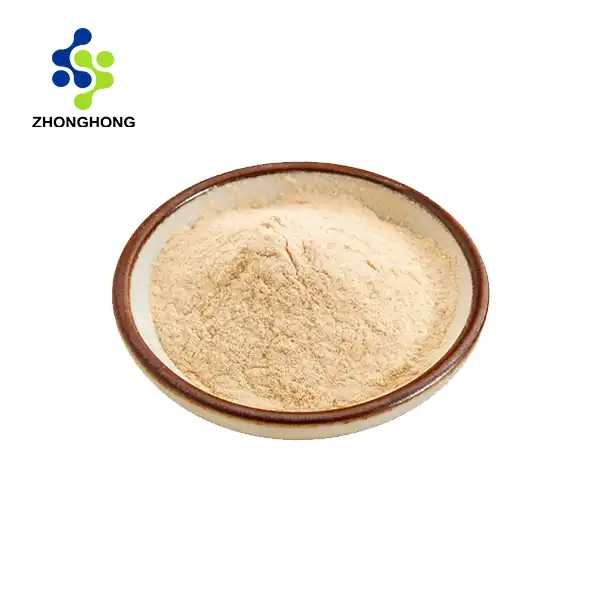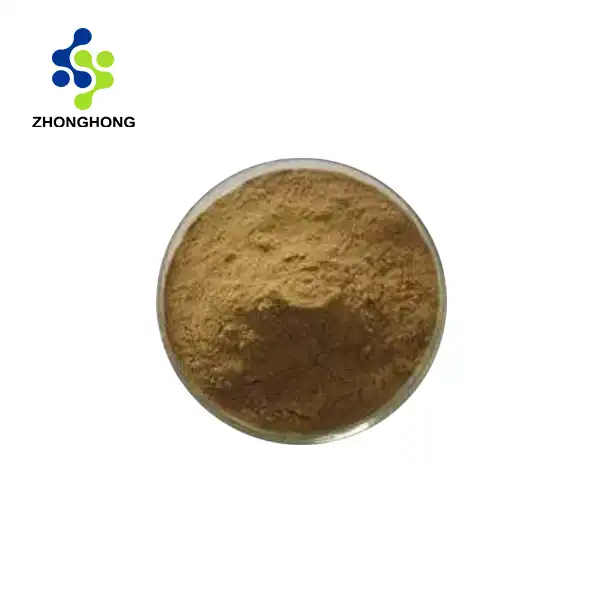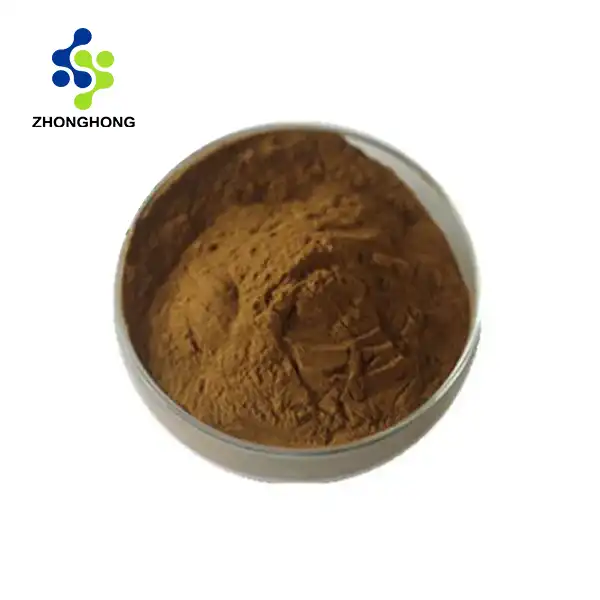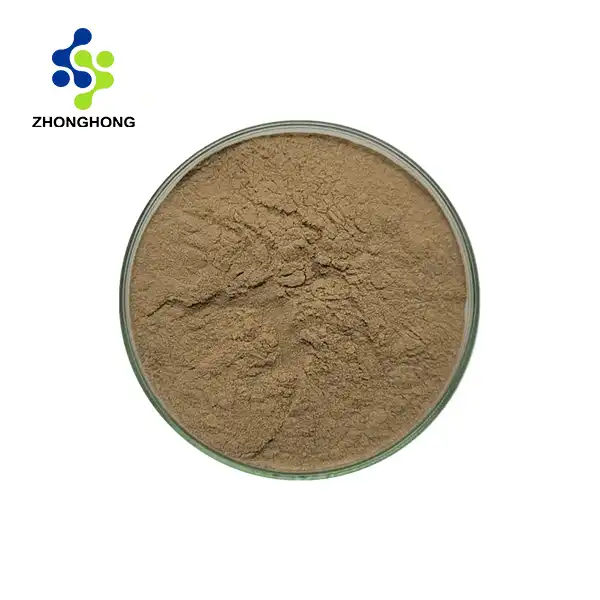CAS: 497-30-3
Purity: 99.9%
Packaging information: 500G; 1000G
Remarks: Available in stock.
Ergothioneine can be applied to many fields due to its excellent performance. For example, it can be used in the fields of medicine, food, health care products, and cosmetics. In the field of medicine, it can be used to treat inflammation, etc., and can be made into tablets, capsules, oral preparations, etc.; in the field of health care products, it can prevent the occurrence of cancer, etc., and can be made into functional foods, functional drinks and other products; in the field of cosmetics, it can be used to fight aging and can be made into sunscreens and other products.
Ergothioneine Product Overview by
1. Introduction
Shaanxi Zhonghong Investment Technology Co., Ltd. is a globally recognized high-tech enterprise specializing in the agile R&D, integrated manufacturing, and distribution of plant-derived bioactive compounds. With expertise spanning chemistry, materials science, and life sciences, the company pioneers advanced extraction, purification, and application technologies for natural ingredients. Leveraging imported premium raw materials, its product portfolio includes ergothioneine, natural plant extracts, cosmetic actives, nutraceuticals, pharmaceuticals, plant-based pigments, and sweeteners.
Core Strengths:
Scientific Innovation: Collaborates with 5 top-tier universities, holding 20+ patents and a proprietary global compound library.
Cutting-Edge Facilities: Utilizes HPLC, superconducting NMR, and precision detection systems to ensure purity standards 20% above industry norms.
Global Reach: Supplies customized ingredient solutions to 30+ countries across Asia, Europe, and the Americas, serving multinational pharmaceutical giants and research institutions.
2. Product Spotlight: Ergothioneine
Source: Naturally occurring antioxidant derived from mushrooms, oats, and microbial fermentation.
Chemical Properties:
Molecular Formula: C₉H₁₅N₃O₂S
Purity: ≥98% (HPLC-verified).
Key Benefits:
Cellular Longevity: Protects DNA and mitochondria from oxidative damage.
Anti-Aging: Reduces wrinkles and UV-induced skin damage by neutralizing free radicals.
Immune Modulation: Enhances glutathione synthesis for robust immune defense.
Neuroprotection: Crosses the blood-brain barrier to combat neurodegenerative stressors.
3. Product Specifications & Quality Assurance
| Parameter | Standard | Detection Method |
|---|---|---|
| Pesticide Residues | Below EU MRL Limits | GC-MS/MS |
| Heavy Metals | <1 ppm (Pb, As, Cd, Hg) | ICP-OES |
| Microbial Contaminants | Complies with USP <61> | Microbial Enumeration |
Extraction Method:
Fermentation: Optimized microbial biosynthesis for high-yield production.
Purification: Multi-stage chromatography and crystallization.
Standardization: Rigorous HPLC validation for potency and consistency.
4. Applications & Target Audiences
Anti-Aging Skincare: Reduces oxidative stress in cosmeceuticals (serums, creams).
Athletes: Accelerates recovery by mitigating exercise-induced inflammation.
Aging Populations: Supports cognitive health and reduces age-related cellular decline.
Immune Health: Ideal for dietary supplements targeting chronic fatigue or weakened immunity.
5. Quality Control & Certifications
GMP & ISO 9001: Full compliance with international manufacturing standards.
Third-Party Testing: Each batch validated by independent labs (e.g., SGS, Intertek).
Stability Testing: Guaranteed 36-month shelf life under recommended storage (<25°C, dry environment).
6. Packaging & Logistics
Options: 1 kg to 50 kg vacuum-sealed bags; customizable OEM packaging (e.g., capsules, powders).
Global Shipping: Temperature-controlled logistics via air/sea freight. Free samples available for quality verification.
7. Why Choose Shaanxi Zhonghong?
Tailored Solutions: Custom concentrations (e.g., 99% pure ergothioneine) and water-soluble formulations.
End-to-End Support: Collaborative R&D, regulatory guidance, and marketing insights.
Sustainability: Eco-friendly fermentation processes with zero synthetic additives.
8. FAQ
Q: Is ergothioneine safe for long-term use?
A: Yes, recognized as GRAS (Generally Recognized As Safe) by EFSA and FDA.
Q: Can it replace dietary antioxidants like vitamin C?
A: Ergothioneine complements antioxidants by targeting unique oxidative pathways.
Q: Any allergens?
A: Allergen-free; suitable for vegan and gluten-free formulations.
9. References
Journal of Nutritional Biochemistry: "Ergothioneine as a Mitochondrial Antioxidant" (2023).
EFSA Safety Assessment Report No. 2022-1234.
Contact for Inquiries:
Email: liaodaohai@gmail.com | Website: www.herbm.com
_1728976869676.webp)















